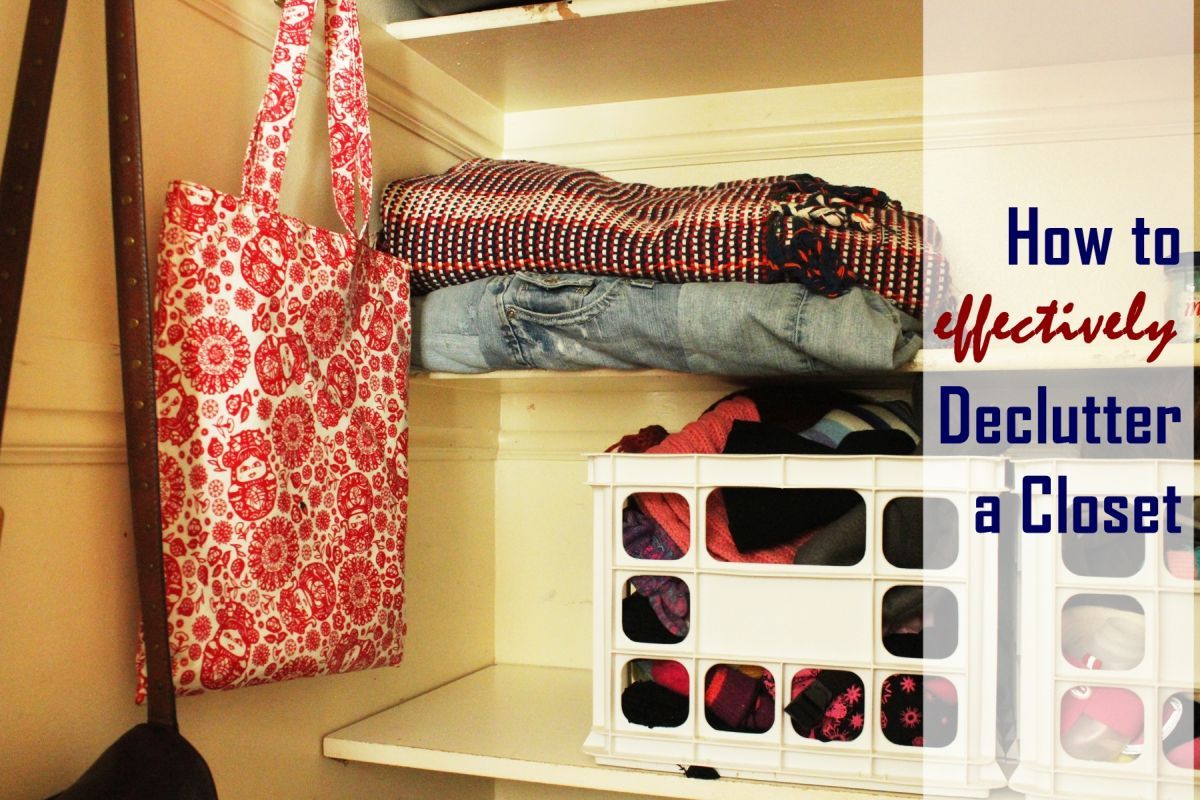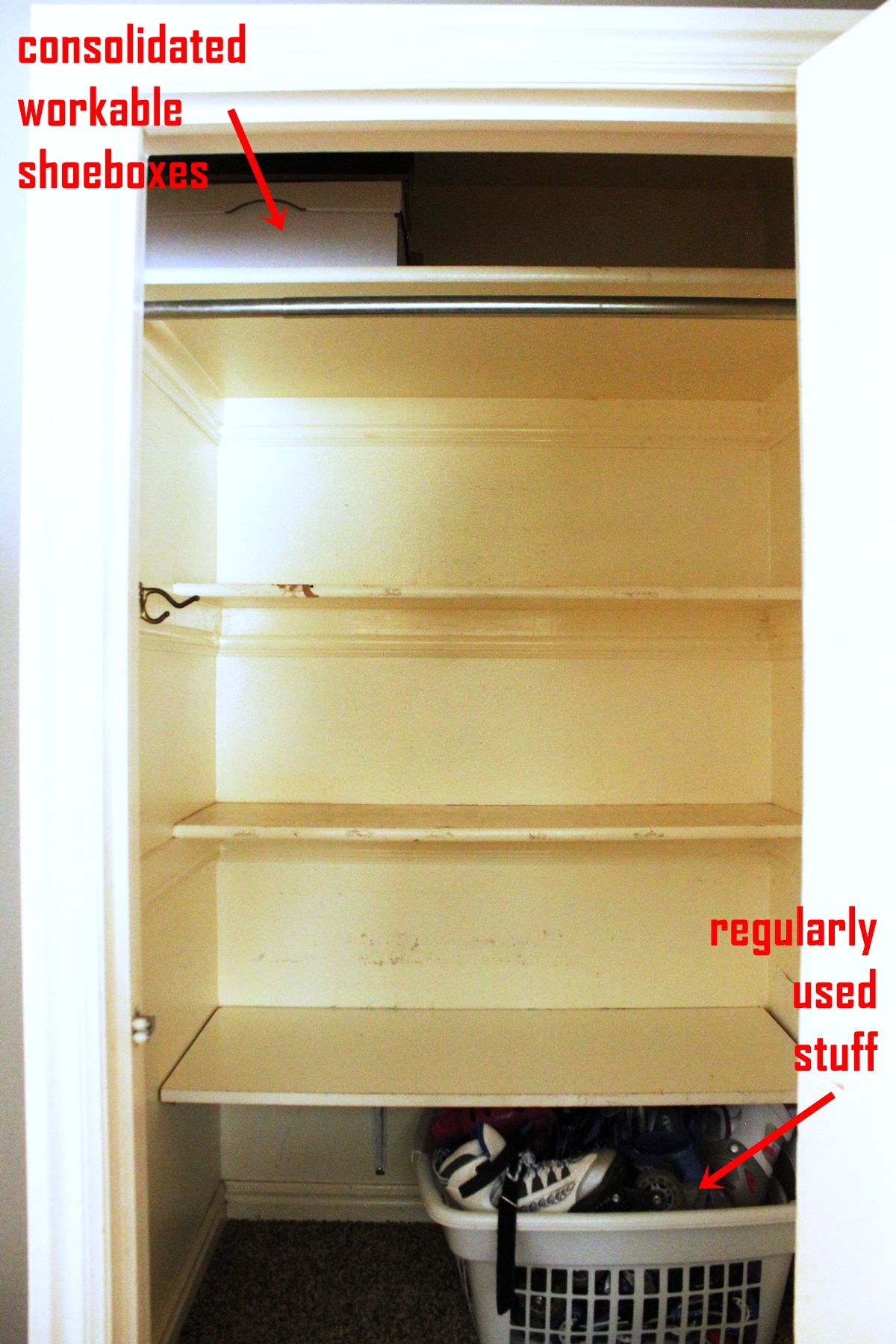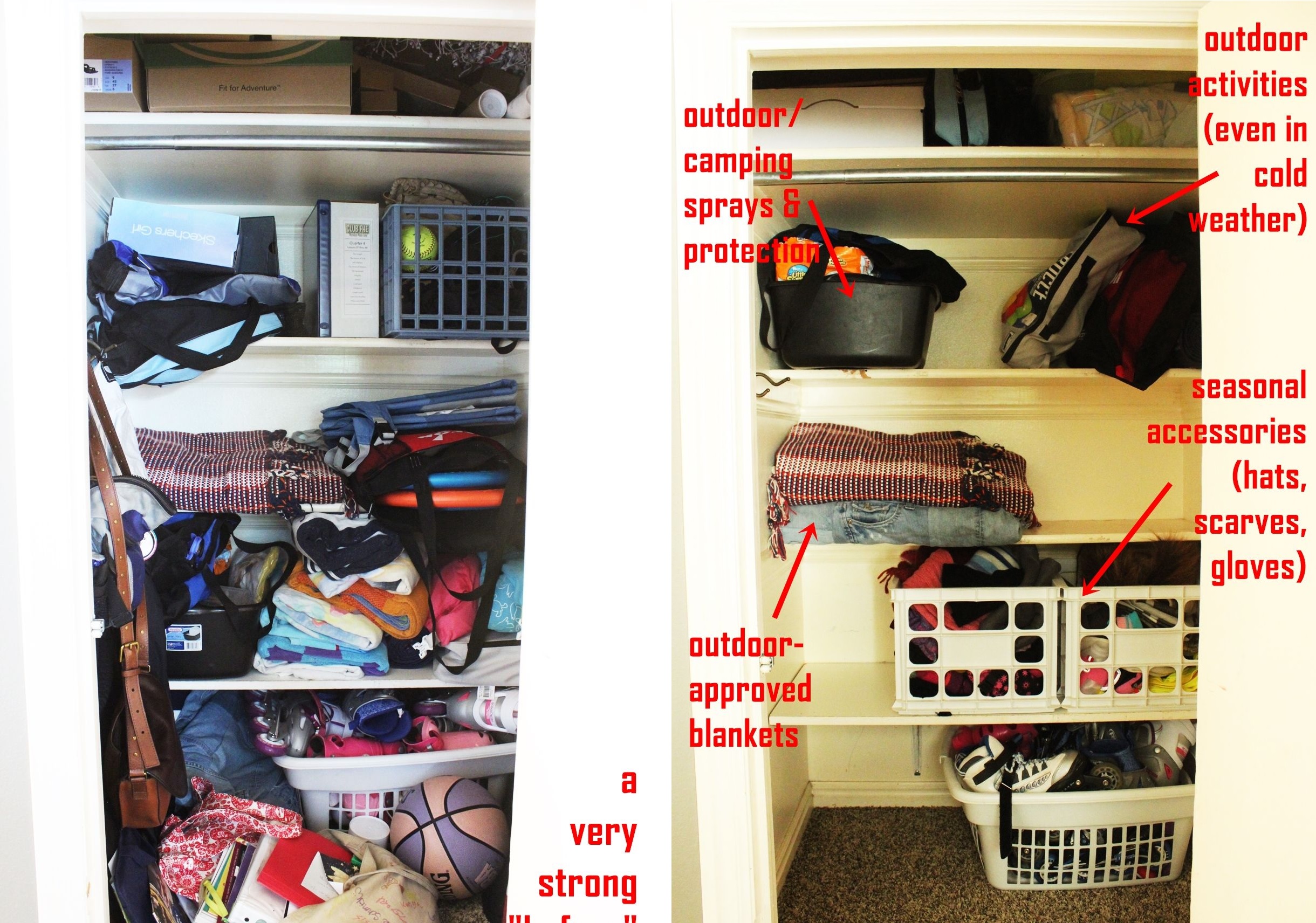Messy closet? Messy brain? If you feel stuck and depressed for no reason, you might need to think about decluttering your life.
Sometimes, this type of thing is best tackled with something tangible, like with a closet. Not only does the mental process of removing the old, considering the important, and restocking the useful prove effective in the physical space we inhabit, it can also be a very helpful exercise that extends to the other areas of our lives. So here’s a brief tutorial on how to declutter a closet.
This closet in particular needs no explanation as to why it’s a prime example for an article on decluttering. For your reference, it’s a small hall closet off the front door of our home.
Step One: Planning Your Closet Use
The first step in decluttering is to carefully consider the real purpose of the space you are decluttering. In this instance, the closet is meant to provide easy access to outdoor equipment and/or activities, store some crafting/school project materials, and hold regularly needed grab-and-go bags, such as a bag for church, a purse, and a laptop bag.
The challenge with this closet is that, when seasons change, we often forget to remove the off-season items and replace them with the things that are appropriate for that time of year. Everything ends up getting shoved in on top of each other, eventually creating no space to maneuver or access anything.
Step Two: Remove and Purge Everything from the Closet
After you’ve carefully determined the purpose of your closet to be decluttered, it’s time to take action. Remove every item from the closet. Every single one, even if it’s a pain. Because you may be surprised at what you find, even if you think you know exactly what’s in there.
Case-in-point, this closet is accessed probably 10-20 times a day by our family of seven. And, still, I was surprised at what I found. Lonely-only shoebox lids, for example.
Step Three: Sort Clutter into Pile
As you remove everything from your closet, place like objects with like. Keep a space for recycling (if you do that in your area), trash, and donating. Everything else should be grouped together.
For example, there are piles for things to be taken to other parts of the house (don’t take them just yet; focus only on emptying the closet; this will help with efficiency), piles for collections of stuff (e.g., shoeboxes), piles of off-season stuff, piles of things that will need to go back in the closet, etc. Don’t be afraid of making ten (or more!) piles here.
Tips for Organizing Clutter
One effective strategy for decluttering is to group not just like things with like (e.g., swim towels), but also to group all the gear/equipment/pieces of one activity together.
So, for example, whenever we need the swim towels, we likely will need the floaties. We often use the snorkel gear, too, and the swim diapers. Place these all together, which will increase your organizational efficiency ten-fold.
If you have bags in your closet that need to be emptied out, just set them in a pile. Don’t empty them out at this point. As we’ve discussed, your goal right now is to simply remove and group all the closet items.
It’s not time to sort them individually. This closet has a variety of bags, most of them unused and therefore unnecessary, that need to be cleaned out. But they remain full of their odds and end, grouped in a pile of “to be gone through” items.
Step Four: Cleaning the Empty Closet
So, here we are with our totally cleaned out closet. It’s hard to believe that such a small closet housed so much junk. I mean stuff.
With the closet emptied, it’s a perfect time to clean the thing. Vacuum, dust, scrub, do all the things you need to do to create a sparkling foundation for your restocked items. Don’t forget to scrub the walls and the far-back corners.
Step Five: Organizing Your Closet
Next, consider the items that need to go back into the close that are least used. These will go up higher or back farther than other, regularly used items, so they need to go in first. Consolidate these items as appropriate and as possible.
For example, this shoebox collection (which many of you might choose to simply throw into the recycle box altogether, which I respect, but which must stay in our closet for gift wrapping, child-desired organization, and school projects) was consolidated, stacking smaller boxes inside larger ones in order to take up less space.
Step Six: DIY Closet Organizer
Shoe boxes are placed on the top shelf. They are accessible here, but not the easiest, which is a good fit. Also, a basket of roller blades, which are used regularly in warm and cold weather alike, is replaced in its spot.
All the swimming-related gear is put into a box, because the swimming season, for us, is over.
Swim and snorkel gear goes on the top shelf next to the shoeboxes. These are not put into hard storage for us, although you might choose to do that.
Year-round swim lessons, swim team, and the occasional overnight stay in a hotel with a pool make us want to keep this gear accessible when needed.
Step Seven: Using Baskets to Store and Organize
Then, carefully, your decluttering efforts pay off as you stock your closet shelves once again. Position the most-used items in the “best” (e.g., most accessible) real estate in the closet.
Cold-weather accessories, for example, are on the bottom shelf so that our younger children can find what they need for playing in the crisp fall weather and, sooner than later, snow.
And That’s How to Organize a Closet!
The primary rule of thumb for decluttering is to make sure, as you restock your items, that everything has a valid place. It’s nearly impossible to maintain a decluttered space if things don’t have a home. Hooks for bags and purses, boxes and bins for loose items, shelves for boxes – all of these things will help your decluttering efforts to last longer.
You’ll be amazed at how much space you actually have after decluttering. As the primary “public” closet in our home, this closet gets decluttered more than most, but it still works its way toward chaos over time. And every time I declutter, I’m amazed at how much space there actually is. I mean, empty shelf space? It’s downright luxurious.
We hope these tips on how to declutter will help you start the completely satisfying process of decluttering your own space and, in turn, life. A decluttered home is a happy home.
FAQ
What can I use for a small closet organizer?
Utilize every inch using baskets, door hanging pockets, and storage bins.
How much does it cost for closet organization?
You can buy DIY closet organizer systems that you assemble. They usually range in cost from $100-$500 depending on what you need.
How do I maximize my closet space?
Don’t let any space go to waste. Use the full width of shelves, but also buy some stackable shelving dividers to maximize vertical space.
The post How to Declutter a Closet Effectively and Efficiently to Improve Your Mental Health appeared first on Home Decorating Trends - Homedit.

















0 Commentaires